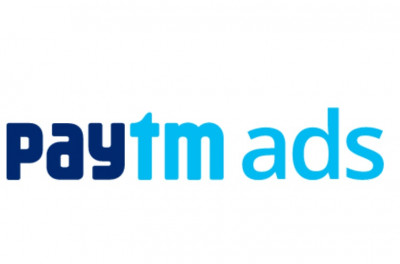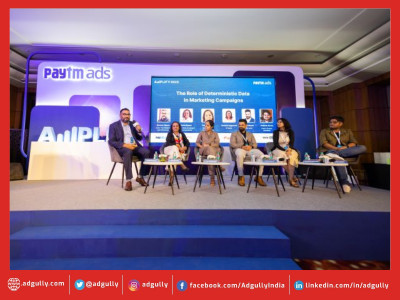How are Audience Insights benefiting D2C Growth in India?
In the D2C ecosystem, the customer is at the center of your business. Your customers want to be known as unique individuals instead of a nameless count in a broad market segment. As a result, they are leaping away from the days of product suggestions based on elementary profiling.
The customers now presume you to know them well beyond the basic demographic information. They want you to understand their purchase behavior, affinity, payment preferences, and device choices and want personalized offerings that cater to their needs and preferences. They love offers and like being pampered.
ALSO READ: Mobile advertising strategies for biggest festive season landscape
D2C businesses need solutions based on relevant customer data that serve actionable insights to offer such tailored experiences. Having carried out impactful campaigns for hundreds of D2C brands, Paytm Ads lists how to use audience insights to connect with the target consumers successfully.
Knowing who your audience is to target them effectively.
It is vital to learn who your real audience is. Leveraging deterministic audience insights based on first-party data can give D2C businesses a 360-degree view of their customers and throw light on who should be their target audience. With insights on past and present purchases, transactional insights, affinity, devices used, and content consumed, above the basic contact information, demography, and location, D2C businesses can proactively engage, convert, and re-sell to their audience. Once they can demystify their audiences, companies can begin to adapt their marketing approach to the needs and behavior of their audiences.
Meet your audience where they are.
In an omnichannel discovery landscape, brands must be present where their customers are. A synchronized approach which is an intersection of the right audiences on the most appropriate channels, is an effective way to grab attention.
Several D2C brands have partnered with Paytm to drive relevant users their way and transact on their websites. It was done by mapping audience affinity towards personal care, health, and wellness brands, apart from other behavioral signals, by identifying their online and offline transactions within the Paytm app and related ecosystems. On identification of the target audiences, brands were made visible to these audiences at crucial intersections during their transaction journey on Paytm.
Paytm Ads believes that distribution is an essential cog for a D2C brand. Earlier CPG brands used to rely heavily on offline retail stores for customer purchases, some of whom have migrated online. On the other hand, today’s D2C brands rely heavily on commerce marketplaces for sale but, in the process, are limiting their avenues to sell, given the penetration of e-commerce in these categories. Using Paytm’s advertising solutions, D2C brands can successfully build their direct
to-customer connections on their website and offline stores, where a significant chunk of India’s retail transactions happen.
Offers, Sampling, Trials - D2C customers love these!
India is known to be a price-conscious and value-seeking market. But, very few brands also know that today’s India has a strong desire to stand out, to experiment, and willingness to pay the price. But why should they trust a new brand on the corner?
Offers and Sampling are an excellent way to capitalize on the age-old insight of value-conscious customers who don’t want to take risks unless convinced while also riding on the newfound desire to stand out.
Some of our large advertisers have capitalized on this emotion very well. For example, Paytm Scratchcards is a much-loved product by our consumers and brand partners. It rewards its users with curated offers from brands that want to target the customer. These scratchcards direct the users to the brand’s website, where the request can be applied, and the user receives the product directly at their doorstep. For example, The Good Glamm Group partnered with Paytm Ads to drive conversion and sampling for their sub-brand My Glamm. Paytm Ads created properties across the user journey to engage and convert them to My Glamm customers. The targeted audiences were given a My Glamm scratch card upon completing the transaction on Paytm. This created an impulse to avail of the offer and made a purchase. The users were then directed to the My Glamm website to choose products with similar value. It also helped the brand to showcase other products from the website to add to the cart. As a result, the campaign saw an increase in the average order value and helped obtain a high investment return. The brand was also featured in the Deals and Hot Deals section to encourage quick purchases and retarget the users who have previously engaged with the brand.
Did we mention first-party data somewhere?
D2C brands can build their first-party database instead of relying on commerce marketplaces. As a result, customers start seeing this as a destination to purchase from the brand. In addition, through custom offers, the brand can acquire new users and offer discounts for its loyal users who love the first sample.
Using such comprehensive and accurate audience insights to run campaigns enables brands to put the right motivators in front of their customers.
Driving Brand recall and Performance with Branding
Audience insights combined with comprehensive ad solutions can help create versatile marketing campaigns. For example, to build a full-funnel campaign, brands can leverage insights based on affinity and transaction signals of users transacting on similar or complementary products and follow through inclusion or exclusion of cohorts based on the campaign objective and performance.
With Paytm Audience insights, D2C brands can create custom audience cohorts to engage with users who are most likely to be interested in their products and brands. For example, Licious, a meat and seafood brand, partnered with Paytm to reach new customers and drive orders on their app. Paytm Ads created a custom user cohort based on transactional insights of users showing a high affinity for meat purchases, online and offline. To ensure high performance in acquiring new customers, Paytm excluded existing Licious customers. Users who have already used Paytm to transact on the Licious app were omitted from targeting to help reduce the wastage of the new user campaign budgets. It helped to spread awareness to new customers and engage them by incentivizing them with an attractive offer. The offer created an impulse to visit Licious App and complete the transaction.
Thus, D2C brands can interact directly with customers and have complete access to the experience chain. As a result, marketers can easily create personalized and customizable user customer experiences. Such insights-driven advertising solutions can help brands generate marketing campaigns that drive engagement and convert customers.






Share
Facebook
YouTube
Tweet
Twitter
LinkedIn